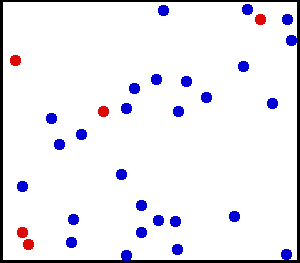Heat

Heat is the thermal energy (E) transferred between systems due to a difference in temperature (T).
Although heat can be experienced and measured with a thermometer, it cannot be cut into pieces nor can it be wrapped in a paper bag.
History
For the ancient Greeks, cold and heat were philosophical concepts that were inseparable.
The German physician Georg Ernst Stahl (1660 – 1734) postulated the existence of phlogiston as the carrier of heat. This theory was refuted by the French chemist Antoine Lavoisier (1743 – 1794).
The Prussian physicist Rudolf Julius Emmanuel Clausius (1822 – 1888) is the founder of the modern kinetic gas theory, according to which heat is the observable effect of the kinetic energy of vibrating and colliding atoms in a substance (see Figure). Ultimately, the thermal energy is distributed equally among all atoms in the substance.
Related concepts
| Last modified: | 10 April 2024 10.37 a.m. |
